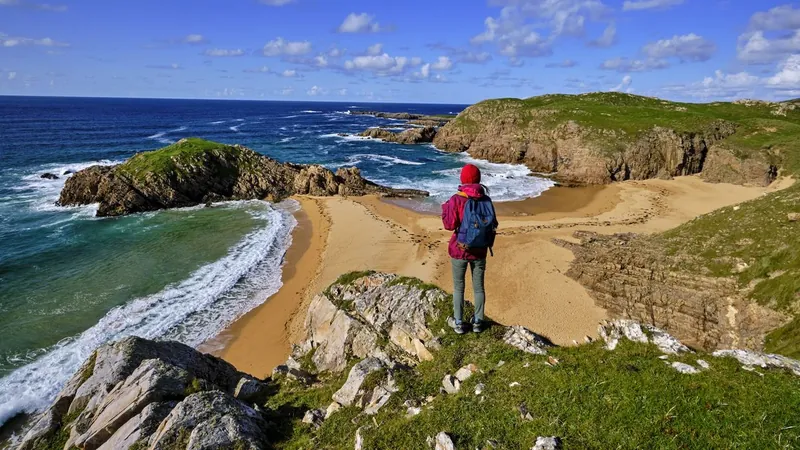
The Coastline Paradox: Why Measuring Coastal Lengths is More Complex Than You Think!
2024-11-11
Author: Ming
The Coastline Paradox: An Introduction
When it comes to measuring coastlines, things are not as straightforward as one might imagine. Take Alaska, for example, known for its rugged terrain flanked with fjords and inlets. According to the Congressional Research Service, Alaska boasts a coastline of 6,640 miles (10,690 kilometers). But the National Oceanic and Atmospheric Administration (NOAA) presents a staggering figure of 33,904 miles (54,563 kilometers). So, how can two authoritative sources provide wildly different numbers?
Understanding the Discrepancy
The discrepancy raises an intriguing question: what is the coastline paradox? This phenomenon arises because coastlines are not simple, linear structures. They are filled with various features such as bays, inlets, rocks, and islands. In essence, the length of a coastline relies heavily on the measurement tool—or "ruler"—one uses. As Katherine Sammler, a geographer at the University of Twente in the Netherlands, points out, using a large ruler gives you a simplistic square surrounding the coast, whereas a smaller ruler captures far more complexity and detail.
Historical Context and Mathematical Implications
This paradox has fascinated mathematicians and researchers for decades. In 1961, English mathematician Lewis Fry Richardson highlighted how different countries report varying lengths of the same border due to different measurement scales. Benoit Mandelbrot, a pioneer in fractal geometry, took it a step further in 1967 by exploring the convoluted nature of Britain's coastline and conceiving the idea of fractals—shapes that possess increasing complexity the closer you examine them. In fact, coastlines, much like fractals, could theoretically be measured to an infinitesimal scale, yielding lengths that approach infinity!
Data Resolution and Implications for Law
In practice, different datasets come with varying resolutions. As a result, coastlines appear differently depending on how detailed the maps are. This inconsistency can have significant implications, particularly in international law. The United Nations Convention on the Law of the Sea specifies guidelines for establishing resource rights based on coastal baselines. Thus, the way nations interpret measurement guidelines can profoundly influence their access to marine resources.
The Dynamic Nature of Coastlines
Beyond measurements, coastlines are dynamic and ever-changing. Factors such as tides, coastal erosion, and rising sea levels contribute to their continual evolution. Consequently, maps from decades ago may not reflect the current reality of coastlines. Sammler emphasizes, "It really doesn't take a lot of sea level rise to start to change these boundaries." This further complicates any attempt to pin down an exact coastline length, whether for Alaska or any coastal region worldwide.
Conclusion: The Elusive Coastline Length
So, how much coastline does Alaska actually have? Or the U.S.? Or even our entire planet? The truth remains elusive, entangled in the fabric of the coastline paradox. This fascinating conundrum challenges us to reconsider our understanding of geography and measurements in a complex and ever-changing world.
Further Insights
To find out more about the impact of these measurement discrepancies—such as how they affect resource rights and maritime boundaries—stay tuned for more insights and analyses on the ever-evolving science of land and sea!



 Brasil (PT)
Brasil (PT)
 Canada (EN)
Canada (EN)
 Chile (ES)
Chile (ES)
 Česko (CS)
Česko (CS)
 대한민국 (KO)
대한민국 (KO)
 España (ES)
España (ES)
 France (FR)
France (FR)
 Hong Kong (EN)
Hong Kong (EN)
 Italia (IT)
Italia (IT)
 日本 (JA)
日本 (JA)
 Magyarország (HU)
Magyarország (HU)
 Norge (NO)
Norge (NO)
 Polska (PL)
Polska (PL)
 Schweiz (DE)
Schweiz (DE)
 Singapore (EN)
Singapore (EN)
 Sverige (SV)
Sverige (SV)
 Suomi (FI)
Suomi (FI)
 Türkiye (TR)
Türkiye (TR)
 الإمارات العربية المتحدة (AR)
الإمارات العربية المتحدة (AR)